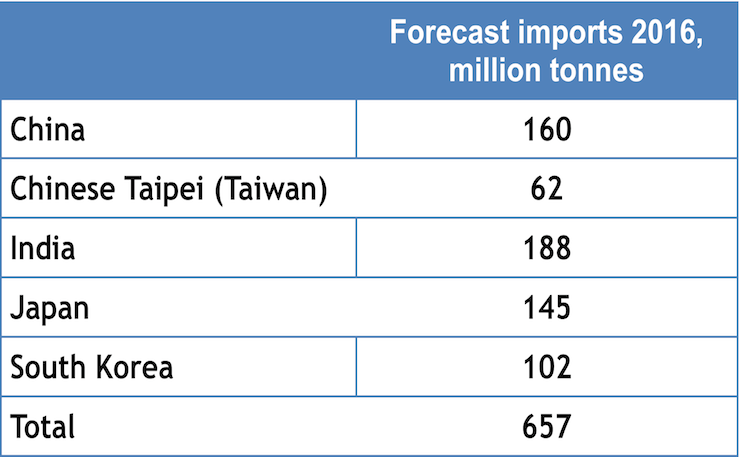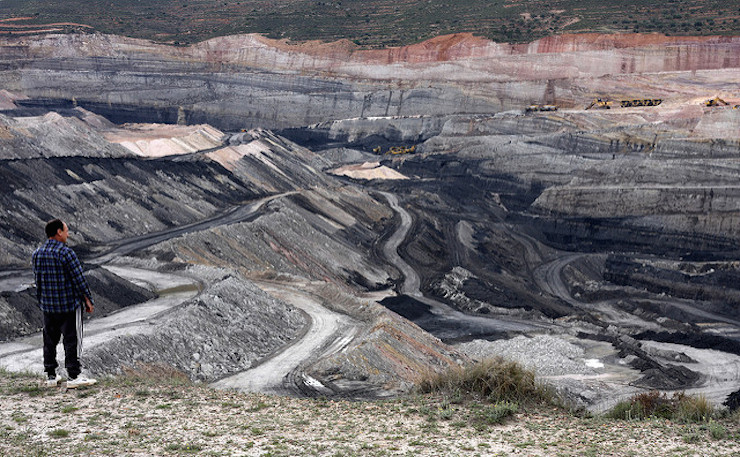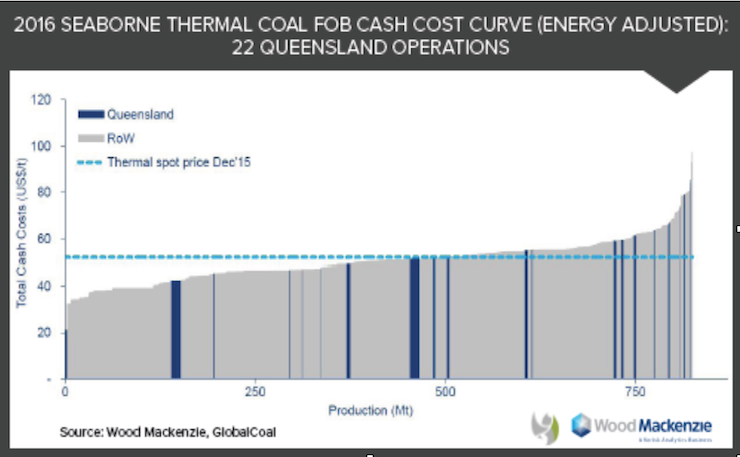POP QUIZZ! Guess who said the following this week:
“Imagine yourself standing in the ocean and you are digging your toes into the sand, trying to keep your head above the water as each wave rolls past.”
Was it:
- A Pacific Islander describing rising sea levels.
- Almost anyone in Australia in the late January storms.
- A coal industry lobbyist.
If you guessed C, you’ve won a lump of coal!
It was Michael Roche, Chief Executive of the Queensland Resource Council, which represents the likes of Adani, Glencore and BHP. He was using the analogy to bemoan that his members are struggling to “keep their head above water,” with the current drop in commodities prices, particularly coal.
You’d think that a rising sea level analogy isn’t the best one for an industry that’s generally accused of inflicting this very problem on other people, but Roche’s job isn’t to write great prose. His job is “to do what we can to preserve the maximum possible number of [mining]jobs”.
This may come as a surprise to Roche’s members, the very mining companies who have been doing everything possible to get rid of mining jobs. They’ve ditched 20,000 in two years by Roche’s own estimate, although the ABS puts the figure at 12,900.
If Roche were serious about jobs, then he’d be pushing his members and the Queensland Government to put people to work on rehabilitating the state’s 15,000 abandoned mine sites. Similar skills for workers are required and this would start to reduce the $1 billion mining cleanup bill that Queenslanders are facing.
But of course, Roche is more interested in hand outs for his members, such as:
- Reductions in “rampant” council rates. (Ah, how many times have we heard about mines shut down by their council rates?!)
- “The fact that the state government is collecting royalties from resource companies which aren’t even covering their cash costs” (Err…so we should give them coal for free?)
- Rail and port providers giving miners discounts “to get through this very difficult part of the cycle”.
Don’t say the “S” word though. Roche is very sensitive to that one, adding that “we are not looking for bailouts or subsidies”. Certainly not. Not subsidies, just, you know, “certainty and support”.
We could go on at Rochey’s expense all day (as his tax-deductable lobby group does on ours!), but his report did contain some interesting analysis.
The factoid that got the headlines was that a lot of Queensland’s coal mines are running at a loss, which you can see in the following graph:
The light blue dotted line shows the current coal price, around US$52 per tonne. The dark blue bars in the graph are Queensland mines that produce “thermal” coal for generating electricity. The height of the bar shows how much the mine spends to dig up a tonne of coal, while the width of the bar shows how big the mine is, the wider the bar the more tonnes per year the mine can produce. The grey areas represent mines outside of Queensland, particularly Indonesia and New South Wales.
The blue bars on the left that are under the dotted price line are making money, while the taller blue bars on the right that go through the price line are losing money. Importantly, however, this is only covering costs of production and getting the coal on a boat. It doesn’t cover loan payments, returns to investors and a range of other costs. So the three mines just touching the line aren’t really doing too well.
The really bad news for Queensland thermal coal mines is the grey areas. You can see that there is a lot of grey area still below the price line. These mines are still covering costs and have no incentive to reduce their output. Looking at the graph, it appears there are mines that can produce 500 million tonnes of coal and cover costs at these prices.
The market for this coal isn’t that much bigger than this, according to the Department of Industry (see below).

Bearing in mind that Chinese import volumes have “plunged” and Indian imports have declined since the Department made its estimate, most of this demand can be met from existing low-cost producers. The high-cost Queensland mines on the right of the chart simply aren’t going to make money for the foreseeable future.
Roche might see this as a “difficult part of the cycle”, but on his own numbers the coal price doesn’t look like getting out of the toilet anytime soon.
Which brings us back to water analogies.
Those aren’t ocean waves breaking over your head, Rochey, and that floaty thing isn’t a lump of Victorian brown coal. It’s about time Queensland moved away from thermal coal and towards industries that don’t need hand-outs and don’t make other people struggle to keep their heads above water, literally.
Donate To New Matilda
New Matilda is a small, independent media outlet. We survive through reader contributions, and never losing a lawsuit. If you got something from this article, giving something back helps us to continue speaking truth to power. Every little bit counts.






